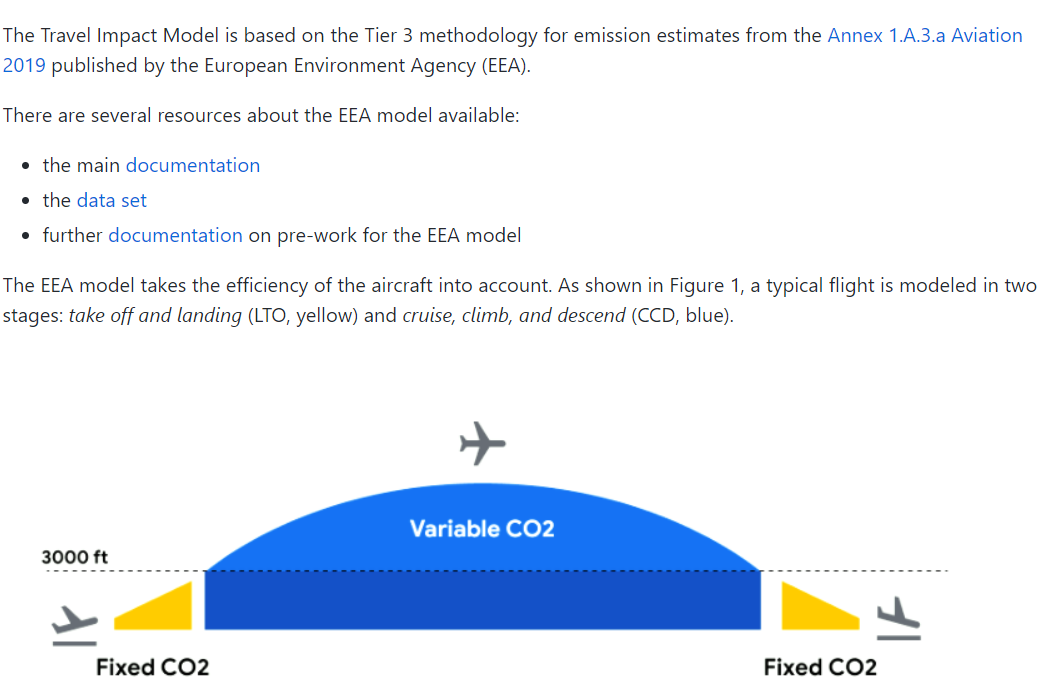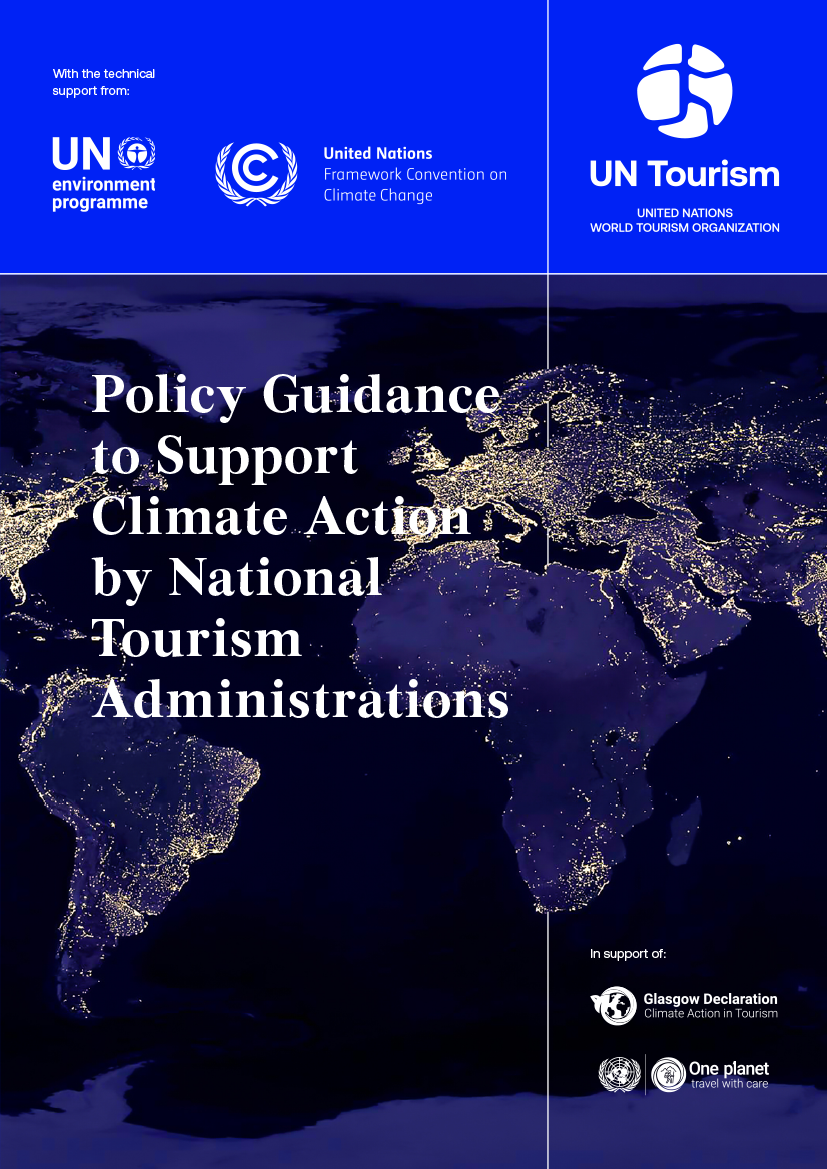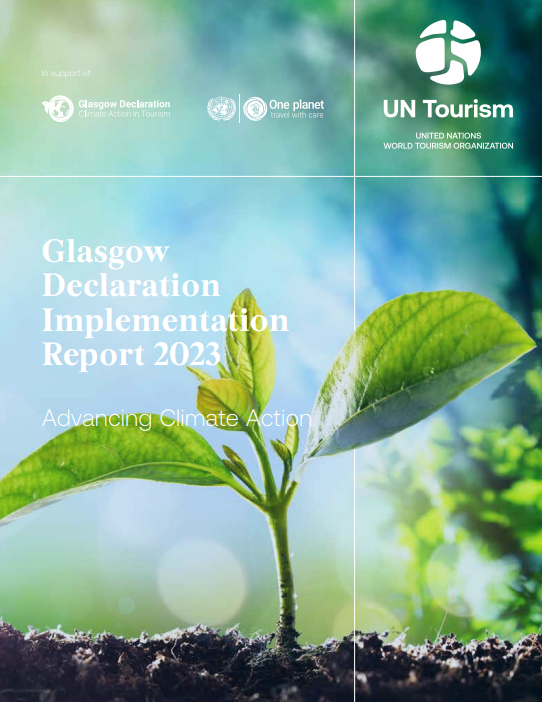A new advisory committee to improve flight emission estimates
Jul 12, 2023
[[read-time]] min read
We’re introducing an independent advisory committee to oversee and improve the Travel Impact Model, our methodology for estimating individual flight emissions.

Tackling climate change is a global effort, and everyone — businesses, governments, individuals — has an important role to play. So it’s critical that we all have access to high-quality, credible information to understand how our everyday choices might affect the environment. For example, air travel, which accounts for 2-3% of global CO2 emissions, is one area where we can make a big impact. In fact, global search interest in “ sustainable travel ” has increased by 100% over the past five years.
To help travelers make more sustainable choices, we created the Travel Impact Model (TIM) , a public and freely accessible methodology for predicting the per-passenger CO2 emissions produced by an upcoming flight. Today, the TIM powers the emissions estimates you see on Google Flights , as well as sites like Booking.com, Expedia and Skyscanner, through our work in the Travalyst coalition .
Over time, we’ve refined and improved the TIM with help from academic and nonprofit experts, as well as various partners in the travel industry. Now, we’re formalizing these collaborative efforts by establishing an independent advisory committee to oversee future changes to the TIM.
With the International Council on Clean Transportation serving as the Secretariat, this new committee brings together a group of uniquely qualified individuals and organizations:
- Jill Blickstein, Vice President, Sustainability, American Airlines
- Tim Johnson, Director, Aviation Environment Federation
- Jane Ashton, Sustainability Director, easyJet
- Achilleas Achilleos, Strategic Programme Officer, European Union Aviation Safety Agency (non-voting board observer)
- Kevin Welsh, Executive Director, Environment & Energy, Federal Aviation Administration (non-voting board observer)
- Dr. Marc Stettler, Reader in Transport and the Environment, Imperial College London
- Dr. Daniel Rutherford, Aviation Program Director, International Council on Clean Transportation (non-voting Secretariat representative)
- Caroline Drischel, Head of Corporate Responsibility, Lufthansa Group
- Prof. Steven Barrett, Professor of Aeronautics and Astronautics, Massachusetts Institute of Technology
- Andrew Chen, Principal, Aviation Decarbonization, Rocky Mountain Institute
- Sally Davey, Chief Executive Officer, Travalyst
Starting this month, the TIM Advisory Committee will convene on a regular basis to discuss and approve updates to the model by incorporating the latest scientific knowledge in the field of flight emissions forecasting. Google will continue to administer the technical implementation of the TIM, including the management of API access and relevant data sources from standardized industry feeds.
While there’s still a long road ahead to make aviation more sustainable, increasing transparency for travelers is an important step forward. We’ll continue to work across the travel sector to make sure you can find consistent and reliable data, no matter where you research your next trip.

Related stories

See the winners of our Single-Use Plastics Challenge

How we're supporting watershed health in southern Nevada

How Chromebooks can support your school's Earth Day goals

Earth Week 2024: How we’re working with climate startups on sustainability

New ways to power up your electric vehicle adventures with Google Maps

Find more sustainable ways to get around, with new Maps and Search updates
Let’s stay in touch. Get the latest news from Google in your inbox.
- Programmes Consumer Information for SCP Sustainable Buildings and Construction Sustainable Food Systems Sustainable Lifestyles & Education Sustainable Public Procurement Sustainable Tourism
- Network Members Directory Organisations
Travel impact Model
- Published on December 12, 2022
Travel impact Model is an open-source methodology based on methodologies and tools of Google and Skyscanner designed to enable a single model for reporting of emissions from aviation. This resource has been reviewed as part of the Climate Action in the Tourism Sector: An overview of methodologies and tools to measure greenhouse gas emissions within the framework of the Glasgow Declaration on Climate Action in Tourism.
GOAL 12: Responsible Consumption and Production
Goal 13: climate action, goal 14: life below water, goal 15: life on land, goal 17: partnerships to achieve the goal, sdg 12 targets, 12.b tourism, external source(s).

Value Chain Stage(s):
Programme(s):, share your work on sustainable consumption and production, you might also be interested in.

Policy Guidance to Support Climate Action by National Tourism Administrations
Sustainable tourism.

Glasgow Declaration Implementation Report 2023 – Advancing Climate Action

GLASGOW DECLARATION GLOBAL ROUNDTABLE - FITUR 2024
Select a language.
- Español (Latam)
- Bahasa Indonesia
- Português (Brasil)
Using Generative AI for Travel Inspiration and Discovery
Google’s Partner Innovation team is developing a series of Generative AI templates showcasing the possibilities when combining large language models with existing Google APIs and technologies to solve for specific industry use cases.
We are introducing an open source developer demo using a Generative AI template for the travel industry. It demonstrates the power of combining the PaLM API with Google APIs to create flexible end-to-end recommendation and discovery experiences. Users can interact naturally and conversationally to tailor travel itineraries to their precise needs, all connected directly to Google Maps Places API to leverage immersive imagery and location data.
Sorry, your browser doesn't support playback for this video
We want to show that LLMs can help users save time in achieving complex tasks like travel itinerary planning, a task known for requiring extensive research. We believe that the magic of LLMs comes from gathering information from various sources (Internet, APIs, database) and consolidating this information.
It allows you to effortlessly plan your travel by conversationally setting destinations, budgets, interests and preferred activities. Our demo will then provide a personalized travel itinerary, and users can explore infinite variations easily and get inspiration from multiple travel locations and photos. Everything is as seamless and fun as talking to a well-traveled friend!
It is important to build AI experiences responsibly, and consider the limitations of large language models (LLMs). LLMs are a promising technology, but they are not perfect. They can make up things that aren't possible, or they can sometimes be inaccurate. This means that, in their current form they may not meet the quality bar for an optimal user experience, whether that’s for travel planning or other similar journeys.
Open Source and Developer Support
Our Generative AI travel template will be open sourced so Developers and Startups can build on top of the experiences we have created. Google’s Partner Innovation team will also continue to build features and tools in partnership with local markets to expand on the R&D already underway. We’re excited to see what everyone makes! View the project on GitHub here .
Implementation
We built this demo using the PaLM API to understand a user’s travel preferences and provide personalized recommendations. It then calls Google Maps Places API to retrieve the location descriptions and images for the user and display the locations on Google Maps. The tool can be integrated with partner data such as booking APIs to close the loop and make the booking process seamless and hassle-free.
We built the prompt’s preamble part by giving it context and examples. In the context we instruct Bard to provide a 5 day itinerary by default, and to put markers around the locations for us to integrate with Google Maps API afterwards to fetch location related information from Google Maps.
Hi! Bard, you are the best large language model. Please create only the itinerary from the user's message: "${msg}" . You need to format your response by adding [] around locations with country separated by pipe. The default itinerary length is five days if not provided.
We also give the PaLM API some examples so it can learn how to respond. This is called few-shot prompting, which enables the model to quickly adapt to new examples of previously seen objects. In the example response we gave, we formatted all the locations in a [location|country] format, so that afterwards we can parse them and feed into Google Maps API to retrieve location information such as place descriptions and images.
Integration with Maps API
After receiving a response from the PaLM API, we created a parser that recognises the already formatted locations in the API response (e.g. [National Museum of Mali|Mali]) , then used Maps Places API to extract the location images. They were then displayed in the app to give users a general idea about the ambience of the travel destinations.
Conversational Memory
To make the dialogue natural, we needed to keep track of the users' responses and maintain a memory of previous conversations with the users. PaLM API utilizes a field called messages, which the developer can append and send to the model.
Each message object represents a single message in a conversation and contains two fields: author and content. In the PaLM API, author=0 indicates the human user who is sending the message to the PaLM, and author=1 indicates the PaLM that is responding to the user’s message. The content field contains the text content of the message. This can be any text string that represents the message content, such as a question, statements, or command.
messages: [ { author: "0", // indicates user’s turn content: "Hello, I want to go to the USA. Can you help me plan a trip?" }, { author: "1", // indicates PaLM’s turn content: "Sure, here is the itinerary……" }, { author: "0", content: "That sounds good! I also want to go to some museums." }]
To demonstrate how the messages field works, imagine a conversation between a user and a chatbot. The user and the chatbot take turns asking and answering questions. Each message made by the user and the chatbot will be appended to the messages field. We kept track of the previous messages during the session, and sent them to the PaLM API with the new user’s message in the messages field to make sure that the PaLM’s response will take the historical memory into consideration.
Third Party Integration
The PaLM API offers embedding services that facilitate the seamless integration of PaLM API with customer data. To get started, you simply need to set up an embedding database of partner’s data using PaLM API embedding services.
Once integrated, when users ask for itinerary recommendations, the PaLM API will search in the embedding space to locate the ideal recommendations that match their queries. Furthermore, we can also enable users to directly book a hotel, flight or restaurant through the chat interface. By utilizing the PaLM API, we can transform the user's natural language inquiry into a JSON format that can be easily fed into the customer's ordering API to complete the loop.
Partnerships
The Google Partner Innovation team is collaborating with strategic partners in APAC (including Agoda) to reinvent the Travel industry with Generative AI.
Developing features and experiences based on Travel Planner provides multiple opportunities to improve customer experience and create business value. Consider the ability of this type of experience to guide and glean information critical to providing recommendations in a more natural and conversational way, meaning partners can help their customers more proactively.
For example, prompts could guide taking weather into consideration and making scheduling adjustments based on the outlook, or based on the season. Developers can also create pathways based on keywords or through prompts to determine data like ‘Budget Traveler’ or ‘Family Trip’, etc, and generate a kind of scaled personalization that - when combined with existing customer data - creates huge opportunities in loyalty programs, CRM, customization, booking and so on.
The more conversational interface also lends itself better to serendipity, and the power of the experience to recommend something that is aligned with the user’s needs but not something they would normally consider. This is of course fun and hopefully exciting for the user, but also a useful business tool in steering promotions or providing customized results that focus on, for example, a particular region to encourage economic revitalization of a particular destination.
Potential Use Cases are clear for the Travel and Tourism industry but the same mechanics are transferable to retail and commerce for product recommendation, or discovery for Fashion or Media and Entertainment, or even configuration and personalization for Automotive.
Acknowledgements
We would like to acknowledge the invaluable contributions of the following people to this project: Agata Dondzik, Boon Panichprecha, Bryan Tanaka, Edwina Priest, Hermione Joye, Joe Fry, KC Chung, Lek Pongsakorntorn, Miguel de Andres-Clavera, Phakhawat Chullamonthon, Pulkit Lambah, Sisi Jin, Chintan Pala.
- Google I/O 2023
- Generative AI
- Commercial Use Case
- Travel and Tourism
- Developer Tools
- Industry Templates

Get ready for Google I/O: Program lineup revealed

Publish your Keras models on Kaggle and Hugging Face
- Help Center
- Travel Analytics
- Travel Demand Explorer
- Marketing Reports
- Trains & Buses
- Google Flights
- Enterprise Reports
- Release notes
- Travel Analytics Center
- Privacy Policy
- Terms of Service
- Submit feedback
Sustainability
Introduction.
In addition to cost, comfort, and reliability, the environmental impact of travel is of increasing importance to consumers. But carriers often struggle to understand what information consumers are actually seeing. The TAC Sustainability dashboard allows you to view what information users are seeing and the projected emissions performance of your upcoming flights.
Emissions are divided into three buckets: “Lower,” “Typical,” and “Higher.” Typical emissions are the median carbon emissions for the searched route, with lower and higher being below and above those levels, respectively.
To learn more about how carbon emissions are estimated using the Travel Impact Model, please check:
- The Travel Impact Model overview at https://travelimpactmodel.org
- The Travel Impact Model specification on Github: https://github.com/google/travel-impact-model
- How carbon emissions are estimated for Google Flights: https://support.google.com/travel/answer/11116147
The Sustainability dashboard is broken into two tabs:
- The Impressions tab shows what information people are seeing when they perform searches on Google Flights.
- The Inventory tab shows the emissions level of your upcoming flights, based on available information on routes and plane models.
Use the Date Range slider at the top of the window to select the period you wish to examine:
- Under the Impressions tab, you can select any period within the last calendar year from the current dataset.
- Under the Inventory tab, you can select any period within one year following the current dataset.
Because the data is heavily processed to ensure anonymity and accuracy, there might be delays in the data refresh and the dashboard might not reflect immediate changes. The selected date range will affect all sections of the dashboard.
The Basic Filters have different options under each tab. Under the Impressions tab, the options include:
- Days Until Departure
- Seating Class
- Domestic/Int’l
Under the Inventory tab, the options include:
- Aircraft Model
- Aircraft Body
Use the Geographic Filters to refine the data by subcontinent, country, region, city, or airport for both origin and destination.
Impressions
The Impressions tab contains the following dashboard sections:
Emission Buckets
The Emission Buckets section contains a timeline graph showing the percentage of higher, typical, and lower emissions flights returned from users’ queries. The Full Date Range pie chart displays the total averages across the time range.
Difference from Lowest Emissions Flight
The Difference from Lowest Emissions Flight section displays the average daily difference between your emissions and the lowest emission flight in the same result pages.

Lower Emissions Frequency
The Lower Emissions Frequency section displays the percentage of results pages where you were present with at least one result in the "Lower Emissions" bucket.
Emissions by Route
The percentage of your impressions with emissions in each bucket, by your top city-city routes.
The Inventory tab shows the following dashboard sections:
The Emission Buckets section shows a timeline graph of the estimated emissions from future flights. A pie chart shows the total average.
Aircraft Models with Lowest/Highest Emissions
The Aircraft Models with Lowest/Highest Emissions section contains two bar graphs: one showing your aircraft models with the highest percentage of direct flights that fall into the Lower Emissions bucket, and one that shows the Highest Emissions bucket.
Emissions by Domestic/International
The Emissions by Domestic/International section shows the percentage of direct flights by emissions bucket, broken down by domestic/international.
Emissions by Aircraft Width
Emissions by Aircraft Width shows the percentage of direct flights by emissions bucket, broken down by narrow and wide aircraft.
Emissions by Flight Distance
Emissions by Flight Distance shows the percentage of your direct flights in each emissions bucket by flight distance.
Inventory Data Quality
The Inventory Data Quality section includes a pie chart showing flights with ACV data, a bar graph showing flights by aircraft model, and a full inventory dataset in tabular form.
Was this helpful?

Travel Impact Model API
- Español – América Latina
- Português – Brasil
- Tiếng Việt
Travel Impact Model API lets you query travel carbon emission estimates.
REST Resource: v1.flights
Service: travelimpactmodel.googleapis.com.
To call this service, we recommend that you use the Google-provided client libraries . If your application needs to use your own libraries to call this service, use the following information when you make the API requests.
Discovery document
A Discovery Document is a machine-readable specification for describing and consuming REST APIs. It is used to build client libraries, IDE plugins, and other tools that interact with Google APIs. One service may provide multiple discovery documents. This service provides the following discovery document:
- https://travelimpactmodel.googleapis.com/$discovery/rest?version=v1
Service endpoint
A service endpoint is a base URL that specifies the network address of an API service. One service might have multiple service endpoints. This service has the following service endpoint and all URIs below are relative to this service endpoint:
- https://travelimpactmodel.googleapis.com
Except as otherwise noted, the content of this page is licensed under the Creative Commons Attribution 4.0 License , and code samples are licensed under the Apache 2.0 License . For details, see the Google Developers Site Policies . Java is a registered trademark of Oracle and/or its affiliates.
Last updated 2022-08-30 UTC.
Navigation Menu
Search code, repositories, users, issues, pull requests..., provide feedback.
We read every piece of feedback, and take your input very seriously.
Saved searches
Use saved searches to filter your results more quickly.
To see all available qualifiers, see our documentation .
- Notifications
Pull requests: google/travel-impact-model
There aren’t any open pull requests..
You could search all of GitHub or try an advanced search .
travelimpactmodel/
This package is not in the latest version of its module.
Directories ¶
Keyboard shortcuts.
You are using an outdated browser. Please upgrade your browser to improve your experience.
google_api_travel_impact_model 0.2.0
Travel Impact Model API client library. Travel Impact Model API lets you query travel carbon emission estimates.
- Online documentation
- 18 18 this version
- 0 0 yesterday
- 2 2 last 7 days
- 18 18 all time
Versions (1)
- 0.2.0 Mar 15, 2024
Dependencies (1)
- google_gax ~> 0.4
Recent Activity
- Mar 15, 2024 Publish documentation for release 0.2.0
- Mar 15, 2024 Publish release 0.2.0
Show All Activities
Build Tools
Dependents (0)
- Documentation ( FAQ )
- Specifications
- Report Client Issue
- Report General Issue
- Report Security Issue
- Contact Support
Policies and Terms
- Code of Conduct
- Terms of Service
- Privacy Policy
- Copyright Policy
- Dispute Policy
2020 © Six Colors AB.
Powered by the Erlang VM and the Elixir programming language .
gcp-services
Travelimpactmodel.googleapis.com.
- travelimpactmodel:v1
Dependencies
Automatically enabled services, reverse dependencies.

IMAGES
VIDEO
COMMENTS
Background. In this document we describe the modeling assumptions and input specifications behind the Travel Impact Model (TIM), a state of the art emission estimation model that Google's Travel Sustainability team has compiled from several external data sources. The TIM aims at predicting carbon emissions for future flights to help travelers ...
This API supports worldwide commercial flights that depart in the next 11 months. Charter flights, private flights and cargo flights are not supported. Past flights are not supported. Please get in contact with us (see the Support page) if you have inquiries and feature requests. The data exposed by this API is under the CC BY-SA 4.0 license.
The Travel Impact Model (TIM) is a transparent & continuously improving emissions estimation model that is built from public and licensable external datasets, based on the latest science. It aims to provide a single source of truth, as a public good, for calculating and presenting the climate impact of individual flight trips to passengers. How ...
Contribute to google/travel-impact-model development by creating an account on GitHub.
We're introducing an independent advisory committee to oversee and improve the Travel Impact Model, our methodology for estimating individual flight emissions. Tackling climate change is a global effort, and everyone — businesses, governments, individuals — has an important role to play. So it's critical that we all have access to high ...
google.travel.sustainability.travelimpactmodel.v1.TravelImpactModelService. Stateless method to retrieve emission estimates. Except as otherwise noted, the content of this page is licensed under the Creative Commons Attribution 4.0 License, and code samples are licensed under the Apache 2.0 License. For details, see the Google Developers Site ...
Travel Impact Model Estimating the Impact of Air Travel. TIM and Governance. Learn more about the Travel Impact Model (TIM) and how it works. Read more. Emissions Calculator. Use our tool to calculate and explain emissions for specific flights. Try it. Powered by Google ...
Dated versions: Model datasets are recreated with refreshed input data but no change to the algorithms regularly. Except as otherwise noted, the content of this page is licensed under the Creative Commons Attribution 4.0 License , and code samples are licensed under the Apache 2.0 License .
Travel impact Model. Published on December 12, 2022. Travel impact Model is an open-source methodology based on methodologies and tools of Google and Skyscanner designed to enable a single model for reporting of emissions from aviation. It includes scope 3 enables CO2 measurement by businesses wanting to measure aviation component of trips.
For any questions and feedback related to the Travel Impact Model API, please contact using this form. Except as otherwise noted, the content of this page is licensed under the Creative Commons Attribution 4.0 License, and code samples are licensed under the Apache 2.0 License. For details, see the Google Developers Site Policies. Java is a ...
View the project on GitHub here. Implementation. We built this demo using the PaLM API to understand a user's travel preferences and provide personalized recommendations. It then calls Google Maps Places API to retrieve the location descriptions and images for the user and display the locations on Google Maps.
Analyze how users view flight emissions data. Measure future impact.Introduction In addition to cost, comfort, and reliability, the environmental impact of travel is of increasing importance to consu
Minor versions: Changes to the model that, while being consistent across schema versions, change the model parameters or implementation. patch: integer. Patch versions: Implementation changes meant to address bugs or inaccuracies in the model implementation. dated: string
{ "baseUrl": "https://travelimpactmodel.googleapis.com/", "description": "Travel Impact Model API lets you query travel carbon emission estimates.", "parameters ...
Travel Impact Model API lets you query travel carbon emission estimates. REST Resource: v1.flights; Service: travelimpactmodel.googleapis.com. To call this service, we recommend that you use the Google-provided client libraries.If your application needs to use your own libraries to call this service, use the following information when you make the API requests.
Date: Represents a whole or partial calendar date, such as a birthday. The time of day and time zone are either specified elsewhere or are insignificant.
Emission estimation model for flights. Contribute to google/travel-impact-model development by creating an account on GitHub.
go.dev uses cookies from Google to deliver and enhance the quality of its services and to analyze traffic. Learn more.
Travel Impact Model API lets you query travel carbon emission estimates. ... Packages; Pricing; Docs; Log in; google_api_travel_impact_model 0.2.0. Travel Impact Model API client library. Travel Impact Model API lets you query travel carbon emission estimates. Links. Online documentation; GitHub; Homepage; License Apache 2.0. Downloads 0 20 40 ...
gcp-services travelimpactmodel.googleapis.com APIs. travelimpactmodel:v1 ; Dependencies Automatically enabled services. None. Reverse dependencies. None
"Geomagnetic storms can impact infrastructure in near-Earth orbit and on Earth's surface, potentially disrupting communications, the electric power grid, navigation, radio and satellite ...